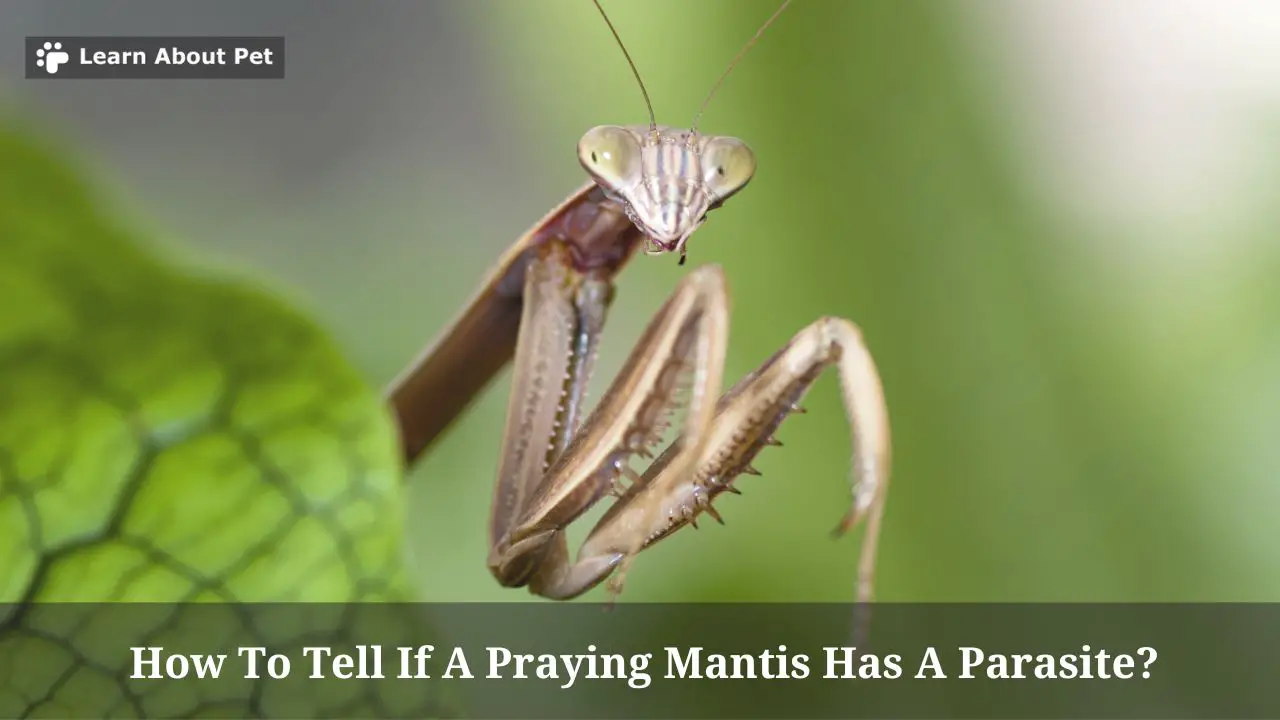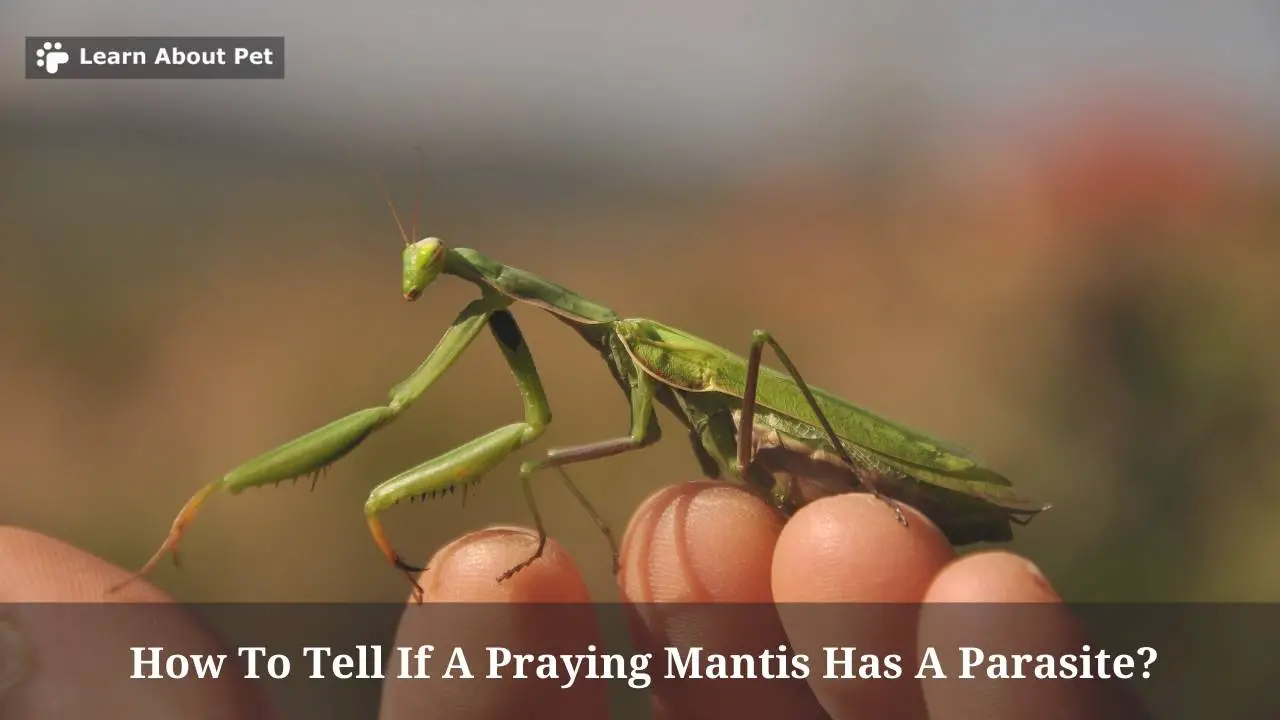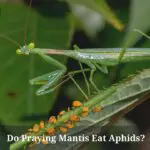Praying mantises do at times get infested with parasites. The question that then comes up is on how to tell if a pet mantis has a parasite. This article answers that question.
This is how to tell if a praying mantis has a parasite: by looking at its features, size and behavior. A praying mantis with a parasite often lacks wings. It usually has stunted growth. And the parasite may manipulate the mantis’ behavior, for instance by drawing the mantis towards water bodies.
Much of course depends on the specific type of parasite that the mantis in question has.

So you often find that how the presence of one type of parasite manifests is very different from how the presence of another type of parasite manifests.
Ultimately though, the mantis that has a parasite will tend to have unique features, size and behavior.
Then again, there are those who may have doubts about this whole phenomenon of mantises having parasites. So they doubt the reality of praying mantis parasite infestation.
Therefore we have to start by answering that basic question: do mantids get parasites (generally). And more specifically, do praying mantis carry parasites?
Do Praying Mantis Carry Parasites?
Yes, praying mantises do carry parasites.
Many entomologists who study mantids (praying mantises) tell us that these insects are often infested by parasites.
On the Internet, there is lots of scientific literature on the subject of praying mantis parasite infestations.
It may even be possible to find online videos of people extracting a parasite from a Praying Mantis. YouTube is home to quite a number of such praying mantis worm parasite extraction videos.
People who keep praying mantises as pets actually get to at times see black stuff coming out of praying mantis. That then gets them wondering, what is coming out of the back of a praying mantis?
That then turns out to be a worm: a parasite.
Others realize right from the outset that what is inside the mantis is a black worm. And that gets them wondering, what is the black worm inside a praying mantis? This turns out to be a horsehair worm.
Ultimately then, all such inquiries reveal that mantises do get parasite infestations.
There are times when the parasites in question come out when the mantises die. So you find someone asking, what comes out of a praying mantis when it dies? And that turns out to be a horsehair worm parasite in praying mantis.
You also find people asking questions like, can a praying mantis survive a horsehair worm? Or can humans get horsehair worms from praying mantises? All such questions prove that parasite infestation in mantises is a reality.
Otherwise there would be no basis for people asking questions like ‘can humans be infected by horsehair worms through praying mantises’ if the mantises couldn’t get such parasites in the first place.
So praying mantises do at times carry parasites. Mantis parasite infestation is real.

Why Do Praying Mantis Have Parasites?
Praying mantises have parasites because some parasites view them as ideal hosts.
Thus there are parasites that have evolved to view mantises as their ideal hosts. Such parasites tend to latch onto the praying mantises – for survival and propagation.
Therefore if you were wondering, why does my praying mantis have a parasite, that is the reason for it. The parasite views your mantis as an ideal host, hence its infestation.
One may then ask, do all praying mantis have worms parasites? And the answer is that some praying mantis seem to be worm parasite-free. Thus there is no evidence that all mantises have worm parasites.
However, there are also a good number of mantises that turn out to be infested by parasites such as worms.
How To Tell If A Praying Mantis Has A Parasite?
You only need to observe the mantis’ features, size and behavior, to know if it has a parasite.
In terms of features, you often find that the mantises with parasite infestation are wingless.
And in terms of size, the mantises with parasite infestation tend to be stunted. Most grow to just half (or below half) of the expected sizes. This is due to the parasites’ sucking off their blood.
In terms of behavior, you often find that the parasites manipulate praying mantis greatly. For instance, parasitic worms manipulate mantises to head into water bodies.
Once the mantises are there, the worms exit from the mantises’ bodies, into the water… So the parasites, by attacking the mantises’ nervous systems, are able to manipulate their behaviors in such ways.
Final Verdict – How To Tell If A Praying Mantis Has A Parasite
To tell if a praying mantis has a parasite, you need to keenly observe the mantis’ features, size and behavior.
Often, the mantises that have been infested by parasites lose some features – for instance, they become wingless.
Further, the mantises with parasites may have stunted growth: often attaining just half their expectable sizes.

And the mantises with parasites may have strange behaviors. For instance, a parasite like the horsehair worm may drive a mantis into diving in a water body: upon which the parasite then exits the mantis’ body.
Note that some types of parasite infestations – such as horsehair worm infestations – can be fatal to praying mantises.
As a pet lover, make sure to learn about pet more and give your pet mantis a good and comfortable life!

Welcome to Learn About Pet. My name is Rajkumar Ravichandran and I love all pets, travel, and amazing food. I write about my passion and personal experience caring for multiple pets in this blog! ❤️
Post Disclaimer
DISCLAIMER: THIS BLOG OR WEBSITE, "Learn About Pet", DOES NOT PROVIDE YOU WITH MEDICAL ADVICE AND IS NOT A SUBSTITUTE FOR MEDICAL ADVICE. ALWAYS GET IN TOUCH WITH YOUR PERSONAL VETERINARIAN AND USE INFORMATION HERE AS GENERAL ADVICE.
The information, including but not limited to, text, graphics, images and other material contained on this website are for informational purposes only. No material on this site is intended to be a substitute for professional veterinary advice, food recommendation, diagnosis, or treatment. Always seek the advice of your veterinarian or other qualified health care provider with any questions you may have regarding a medical condition or for pet food related questions.







